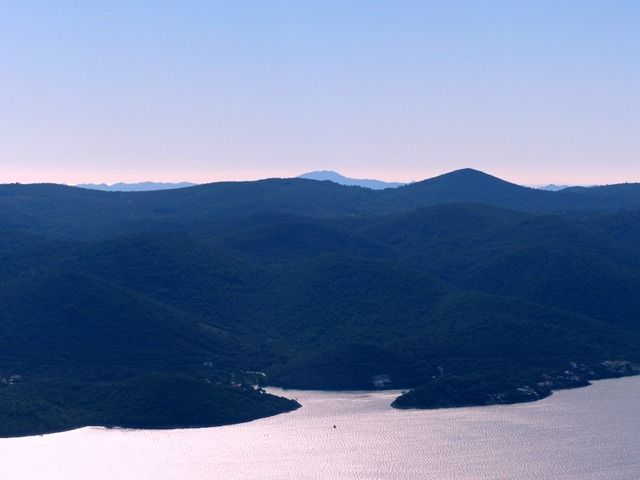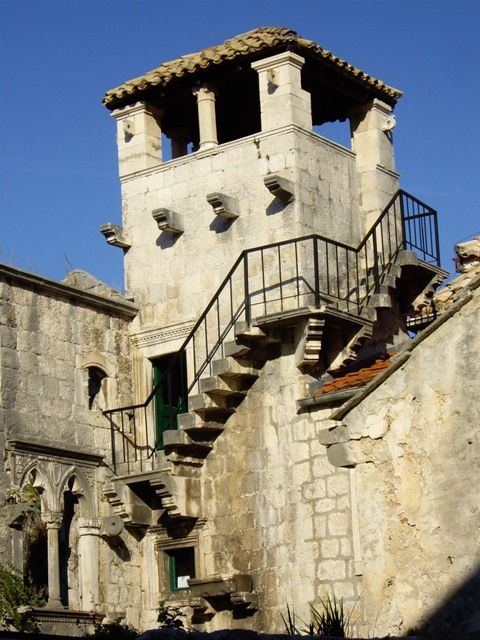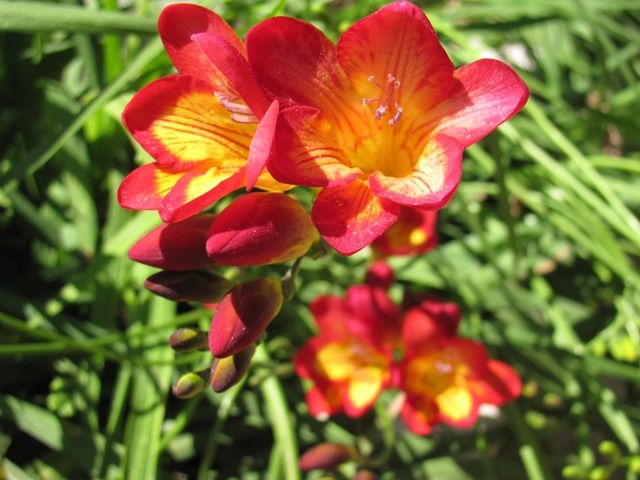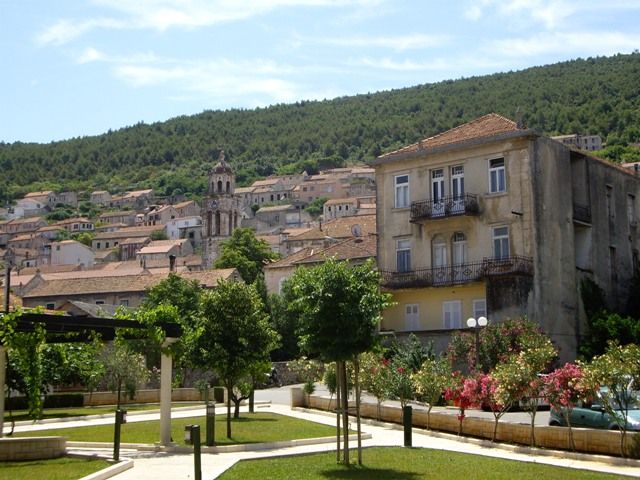TCN continues its 25 Things to Know about Croatia on March 8, 2016, with a look at one of the true gems of Dalmatia - the island of Korcula. We are delighted to welcome local expat experts John and Rachael, owners of the highly recommended Korcula Explorer, for their inside take on the island which has become their adopted home since 2010.
1) Psephisma of Lumbarda
In 1877 Božo Kršinić, a local Lumbardian, found on top of a small hill called Koludrt, the Psephisma of Lumbarda. Dating from 3rd or 4th century BC this inscription carved into a stone pillar, provided details about a Greek colony living in Lumbarda who originated from the island of Issa, today’s Vis Island. The Psephisma includes the names of 200 Greek families and the agreement between themselves and the Illyrians who had already settled in the area. It contractual agreed terms for the establishment of the new colony by the Greeks and the division of land. As one of the earliest discovered documents in Croatia, it provides valuable information about the Greek colonists, as well as the democratic way the people divided the land and harmoniously lived side by side.

Image: Korcula 1 - Psephisma of Lumbarda
2) Abolishment of Slavery
In 2014, the island celebrated the 800 year anniversary of the signing of an important legal document. The Statute of Korcula was first drafted in 1214 and contains a set of laws governing a broad spectrum of life; from health & safety and trade rights, to the responsibilities and duties expected of its citizens. One of the most fascinating decrees was the abolishment of slavery, making Korcula the first place in the world to prohibit this act and indeed some 200 years before the Dubrovnik Republic passed a similar law.
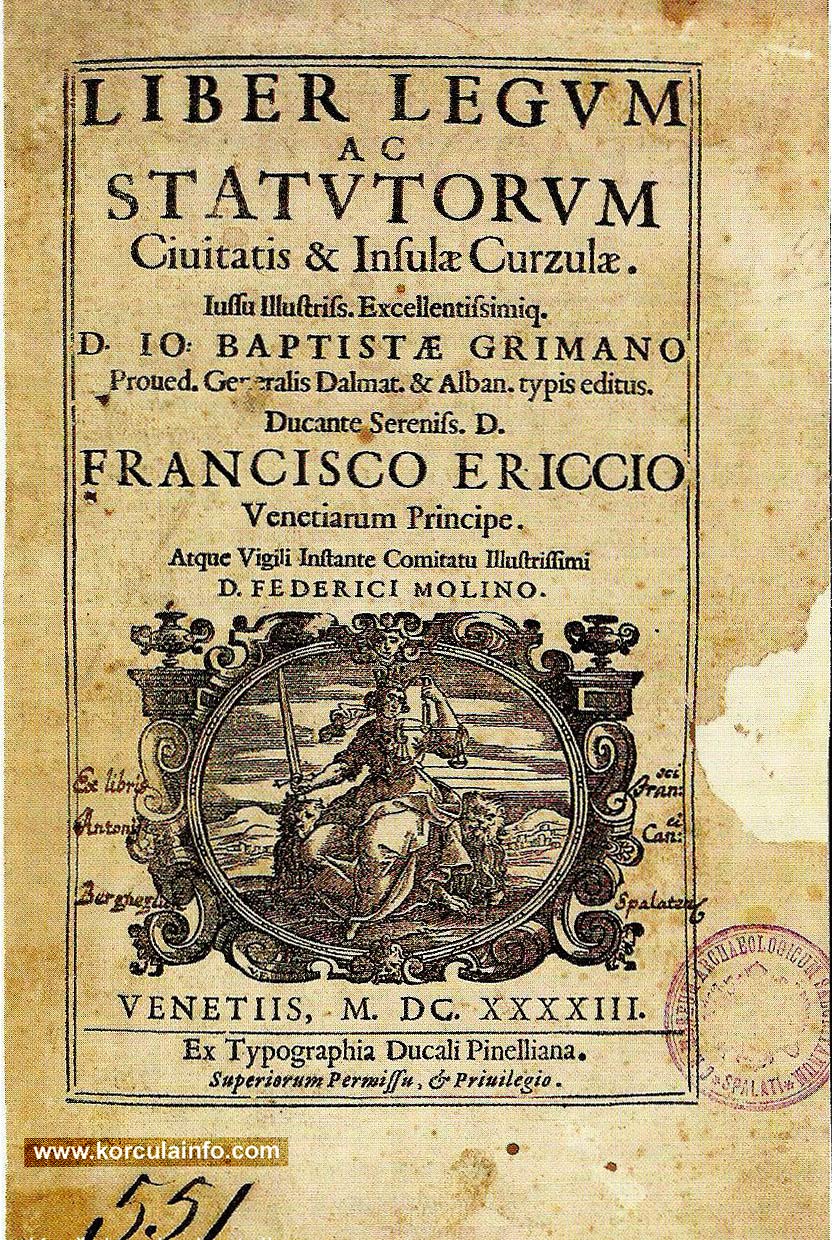
3) The origins of the island’s name
Korcula derives from the Greek name bestowed upon it, “Corkyra Melaina”. One colony of Greeks who ventured to Korcula left their home of Corfu, known in Greek as Corkyra. The name of their own island stems from the legend about the nymph Kerkyra, who was held captive on the island by the God of the sea, Zeus. When the Greeks first sighted Korcula Island they were in awe of the dense forests covering the hills which gave it the illusion of blackness. They took the name of their own island Corkyra, and added to it “Melaina”, which means black or dark skinned. Hence, the name Corkyra Melaina or Black Corfu.
Image: Korcula 3 – Corkyra Melaina – Black Island
4) Some unlikely rulers
Throughout the centuries Korcula has been under the control of a flurry of civilisations all shaping the landscape and culture of the island, from the Ilyrians, to the Greeks, to the Venetians, to the Austrians. Amongst these powers there has been a couple of surprise and short-lived rulers. In 1806 Napolean and his French forces took control of Dalmatia which included Korcula. During the following few years a power struggle over Korcula took place between Napolean and Russia, as an extension of the war that was raging between the two nations. Although far from a peaceful rule, the Napoleanic era has been accredited with the development of a legal system and infrastructure within Dalmatia. However, in 1813 along came the British troops to bring Napolean down and remove his power on Korcula. Under the protectorateship of Thomas Freemantle and Peter Lowen the Brits carved their mark, most notably in the form of a fortress on top of a hill. “Forteca”, although now basically abandoned except for the fire marshal stationed there during the summer months, continued to serve as an important watchtower and fortification for Korcula. I particular like Freemantle’s observation that the Croatians could handle their drink, unlike his British drunken sailors!
Image: Korcula 4 - Forteca
5) Grk
There are a number of localised grape varieties in Croatia but one of the finest and most renowned is the Grk variety, cultivated not only on Korcula Island but only in the picturesque village of Lumbarda. This delicious white wine is a fine example of regional wines and receives plaudits from within Croatia itself and from those who travel from far and wide to try it.
What makes Grk an extra special & fascinating wine, is not only it’s unique taste and distinctive fragrance (dry with a slightly sour taste and mildly bitter at the finish), but that the vines have only female flowering parts, so it will not produce a grape crop if planted alone. Thus, the vineyards of Lumbarda are somewhat strange come late summer when you’ll see white and red grapes grown side-by-side. The regional red wine varietal, Plavac Mali, is grown alongside the Grk vines and acts as its “mate” or as it is sometimes called, the “lover boy”! Plavac Mali provides the male flowering parts for pollination.
The first evidence of Grk has been traced back to the Greeks when they settled on the island in 3rd – 4th century BC. Some people say “Grk” is named after the Greeks whereas some say it’s named after its bitter taste. Gorak is the word for bitter in Croatian. Today there are 7 producers of Grk in Lumbarda, all family run establishments who either sell their wine direct from their tasting rooms or from their local restaurants. Production is small-scale with estimates of around 30,000 bottles of Grk being produced per year. It’s safe to say that most of these are drunk within the year! You can visit the wineries independently or can join a wine tasting tour of the area.
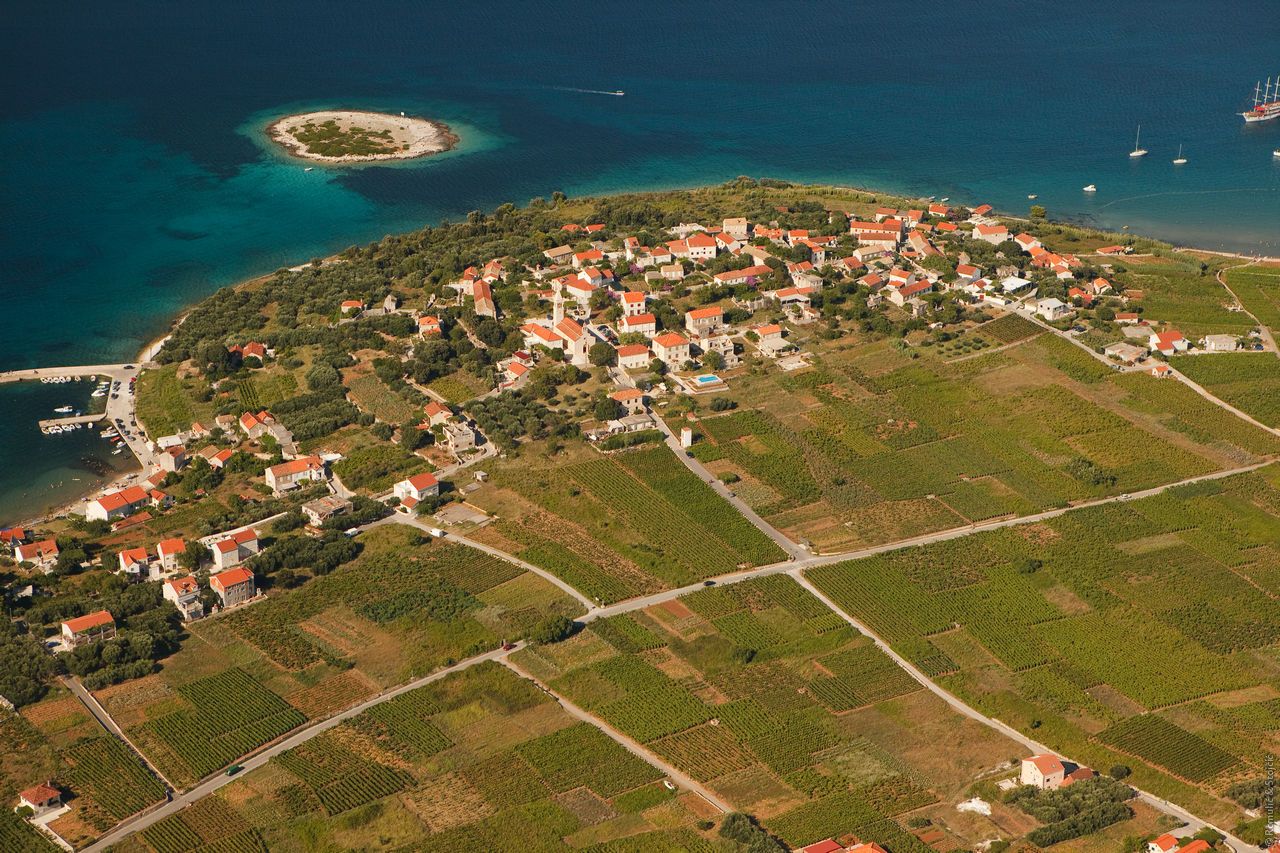
Image: Korcula 5 – Grk vineyards in Lumbarda
Photo Credit: Romulic and Stojcic
6) Sword Dances
Korcula is an island of sword dances the most famous being the Moreska, a two swords dance dating back to the 17th century and performed in the town of Korcula. The performance is a depiction of the battle between the Moors (dressed in black) and the Christians (red), which ends in the defeat of the Moors and the return to the red king of his kidnapped fiancé.
Alongside the Moreska two other sword dances take place on Korcula Island, these being a one sword dance; the Kumpanija, which can be seen in several of the island’s villages and the Mostra which is from the village of Zrnovo. The Kumpanija is named after an old organized village army whose purpose was to protect Korcula and the far western village of Blato. The Kumpanija performs several dances with different historic meanings depending on each location it is performed in and can last a gruelling one and a half hours.
The lesser well known, Mostra dance, is generally performed once a year on the feast of St Rocco (the patron saint of Zrnovo) and used to conclude with the sacrifice of an ox!
7) Shipbuilding
There is a long tradition of shipbuilding on the Island of Korcula. Evidence as far back as the 13th and 14th centuries highlights the importance of the industry. Historically Korcula Old Town was a strategic naval stronghold and was constantly open to threats from pirates and new colonies hoping to make their mark on the island. Combined with the importance of the sea for trade, the construction of sturdy and reliable ships was integral for the islanders survival. At the time wooden shipbuilding was in demand around the world, the skilled craftsmen on Korcula locally called kalafats and marangoni, were therefore already well known. In 1776 the Venetian authorities moved their shipyard from Hvar to Korcula. Old photos mainly from the late 19th century and early 20th century show the thriving shipbuilding yards around Korcula Town and in island villages such as Racisce. Many men also left the island to set up shipbuilding yards in other destinations, as for as New York and Buenos Aires.
In recent years the industry has taken somewhat of a downturn; however the shipyards at Domince in Korcula, in Blato and in Vela Luka are to date still in action. Aside from the solo craftsmen repairing wooden boats, the industry has shifted to the construction of metal and plastic vessels. In 2013 the Leda shipyard on Korcula launched its largest ever ship to be built there, given hope for future success as the desire for cheaper constructions has pushed shipbuilding contracts out to other regions of the world.
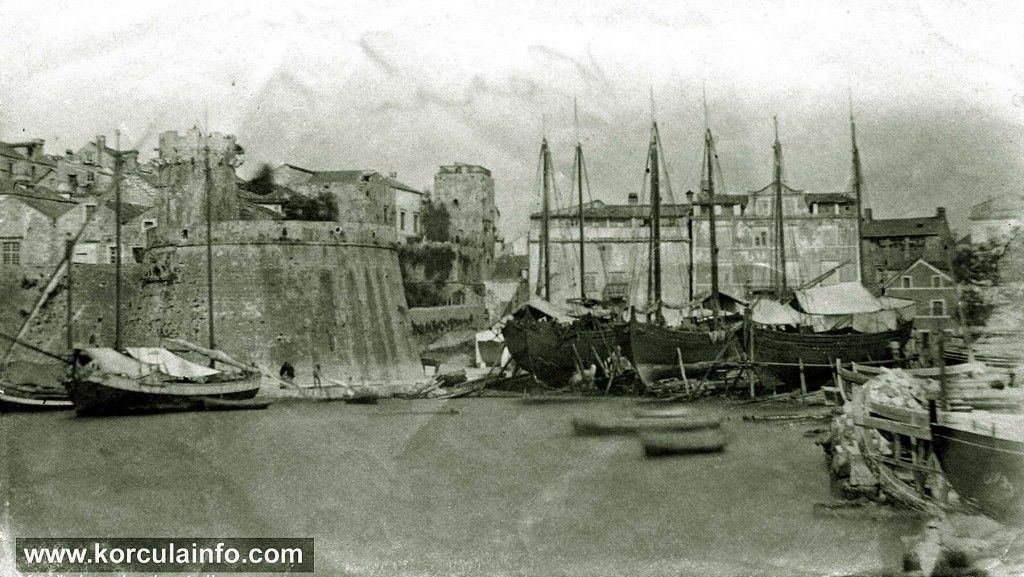
Image: Korcula 7 - Shipbuilding
8) Stone Masonry
One of the most important and traditional industries in Korcula is the quarrying of stone as well as its companion masonry. Perhaps the most famous of Korcula’s 29 quarries is that found on the island of Vrnik. This small islet is the only inhabited in the Korcula archipelago (Skoji Islets), as a community developed due to the quality of the stone found there. The high quality white limestone found on Vrnik and in other quarries of Korcula has been incorporated in such famous buildings as the Haggia Sophia in Istanbul, the parliament building in Vienna, as well as the town hall in Stockholm. Naturally Korcula as well as other neighbouring towns, such as Dubrovnik, benefitted not only from Korcula’s stone but also from the skilled craft of local masons. The craftsmanship of Korcula’s stonemasons developed from the 14th century and are behind much of the island’s finally dressed stone facades. Marko Andijic is known to be the most famous of stonemasons from Korcula and was involved in the construction of the majestic Gothic-Baroque Cathedral of St Mark located in the Old Town, a fine example of the beautifully polished and carved limestone.
Image: Korcula 8 – St Mark’s Cathedral
9) Festivals
There are two things Korcula passionately celebrates with various festivals through-out the year: wine and music, which happily go very well together!
As an island of vines, showcasing Korcula wine is a must. The Grk wine festival takes place in its homeland of Lumbarda three times a year, in late July & August. Purchasing a “Grk” wine glass you are then free to sample the delicious red and white wines produced by the 7 vintners. In honour of the island’s other native white grape, Posip, a week-long festival takes place in the centre of the island in the villages of Cara and Smokvica. “Posip Days” takes place at the end of July into the beginning of August and every evening the winemakers open their cellars for tasting. The pinnacle of wine tasting takes place in Sv.Justine square in Korcula Town on 17 July. The Black Island/White Wine festival celebrates all the producers from Korcula Island with particular emphasis on the white grapes, which the island is best known for – Posip, Grk and Rukatac.
Alongside the wine tasting you will always find live entertainment. Korcula Island pays homage to its melodic nation with several musical festivals, including the Korkyra Baroque Festival, Jazz Festival and the Marko Polo Fest. The first sees 2 weeks in September of baroque concerts played out in a selection of Korcula’s most wonderful locations including St Mark’s Cathedral and on the islet of Badija. Hosted at bars and venues across Korcula Town and Vela Luka the Jazz festival & Open Jazz festival features local, national and international talents over several nights in August. Finally, tying everything together the Marco Polo Fest of Song and Wine in July showcases not only Croatia singers and songwriters, but invites musicians across the world to take part in the contest.
10) Easter Celebrations
There are three long standing religious fraternities or brotherhoods in Korcula Town, founded upon rules laid down by associations of layman, each connected to their own church. All Saints founded in 1301 who dress in ceremonial robes of white, St Rocco founded in 1575 who dress in ceremonial robes of white and yellow and Our Lady of the Belt (St Michael) founded in 1603 who dress in ceremonial robes of white and blue.
Historically these religious groups have held great power and influence in many areas of island life, as well being an important support network to the brothers and their families. Although their authority may not be as strong today, they still have a significant role to play, none more so then during the Holy Week of Easter. Through-out the week the confraternities will individually gather for mass followed by a procession in which the members carry symbolic artefacts including lanterns, crosses and wax candles called “torci” which can weigh around 80 kilos! They are followed by local people carrying candles, chanting special songs and prayers. The Good Friday procession sees the three brotherhoods combine together in a particularly moving display. It makes the Easter celebrations on Korcula one of the most impressive displays of island tradition.

Photo: Korcula 10 – Easter Celebrations
11) Sporting events
Every year Korcula hosts several sporting events. For the 5th year running, domestic and international athletes will take part in arguably one of the most scenic triathlon courses. Open to amateurs and professionals, the Marko Polo Triathlon kicks off the sporting calendar in April. In June, teams from various locations in Croatia depart from the bay of Kneze in traditional rowing boats for the Lađarska regata Kneže-Korčula. The boat race takes place over a 10km stretch of the Peljesac channel finishing in Korcula Town. At the other end of the island in Vela Luka, a traditional regatta takes place from Gradina Bay to the centre. The race in honour of St. John has been staged for a 100 years and in 1933 a special race saw a local team take on the crew from a British warship.
Photo: Korcula 11 – Marko Polo Triathlon
12) Half New Year
In 2001 someone on Korcula came up with the decision to celebrate Half New Year! Since then, every 30 June sees Korcula Town turn into an open air carnival with locals and tourists donning fancy dress, joining in the masked parade before dancing, eating and drinking the night away into the early hours of the following day. Live music rings out across the town and fireworks herald the start of the new half year at midnight. For a relatively sleepy island, the town really knows how to party and many of the costumes you’ll see look like something off a movie set. Come and celebrate the 15th Half New Year party in 2016!
13) Water Polo
It’s a popular sport across Croatia but perhaps no more so than on Korcula. The people of Korcula started playing water-polo in 1926 when students seeing it as a popular new game brought it back to the island. Before any swimming pools were built people would play off various beaches – today there are indoor and outdoor venues. In 1979 Croatia won the European Cup; 10 members of the team were from Korcula, which is rightly celebrated as a great achievement for the island. One of the biggest events in Korcula Town each year is the Water-polo Championship with teams competing from the small areas of the town. It’s a huge social event where the majority of the townspeople print their area logo on t-shirts to wear with pride in support of their team.

Photo: Korcula 13 – Water-polo European Champions 1979
14) Marko Polo
It’s a hotly debated topic in this part of the world - was Marko Polo from Korcula or Venice? Both cities have gathered extensive research laying claim to the explorer’s birthplace and Korcula certainly puts forth some convincing arguments. There is a long line of “De Polo’s” who have lived & live on Korcula claiming Marko Polo as their ancestor and residing in the Old Town is the supposed family home. In recent years, the appearance of a string of Marko Polo shops, various ice-cream kiosks and restaurants using his name, and the museum about his life and journey along the Silk Road, certainly exemplifies the symbolic importance of him nevertheless.
For sure Marko Polo was captured on Korcula by the Genoese during the naval battle against the Venetians (who controlled Korcula at the time). It was during his time in a Genoese prison where he wrote Il Milion. However, as to whether Marko Polo was from Korcula or not, it remains one of the many quaint island tales.
Photo: Korcula 14 – Marko Polo House
15) Frano Kršinić
Grk vineyards and the psephisma, the village of Lumbarda has some special claims and we have one more to add, as the birthplace of the sculptor Frano Kršinić. Regarded as one of the three most important Croatian sculptors of the 20th century, Kršinić who was born in 1897 received world-wide acclaim. His family were stonemasons and he went on to study in the Czech Republic before returning to Zagreb to teach. At the time of the Art Deco trend, Kršinić developed his own individual style and is especially noted for his sculptures in marble of female figures resting, waking, combing, bathing etc. He was one of the founders of the Croatian Academy of Fine Arts and Croatian Academy of Sciences and Arts. In Lumbarda you can see the bronze Second World War Memorial created by Kršinić.
Photo: Korcula 15 - Memorial in Lumbarda in album
16) Maksimilijan Vanka
Although not born on Korcula, the famous artist Maksimilijan Vanka made the island his summer Croatian home and where he created several of his masterpieces. Maxo Vanka moved to America in the 1930s and after his untimely death some 30 years later (he disappeared whilst swimming), his wife donated their house and studio in Korcula along with 47 works of art to the Croatian Academy of Arts and Sciences. In Korcula Town you can visit the Memorial Centre which features a number of these pieces including paintings, watercolors, pastels and drawings.
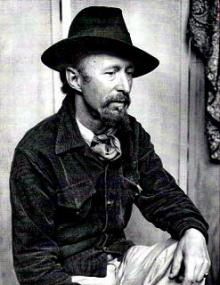
Photo: Korcula 16 – Maksimilijan Vanka
17) Marija Petkovic
Born in Blato in 1892, Maria Petković tirelessly devoted her life to help others, particularly orphaned and poor children. Even from a young age her selflessness and humility was apparent, as was her desire to devote herself to religion and God. In her own town she opened three important institutions: a day-recovery centre, a child-care facility, and an orphanage. Her reach went beyond Blato, opening centers for children across Croatia, Serbia and Macedonia and her travels took her through Latin America and Italy where she established a number of communities. Some-time after her death in 1966, a Peruvian submarine got into disastrous trouble after being hit by a fishing trawler. The lieutenant prayed for Marija Petkovic’s aid and against all odds managed to save the lives of the 22 crew onboard which were certain to die. The years that followed saw investigations into the miracle and on 6 June 2003 Pope John II celebrated her beatification in Dubrovnik where she was formally recognised as "Blessed”. The Sanctuary of Blessed Marija of Jesus Crucified Petkovic can be visited in Blato today.
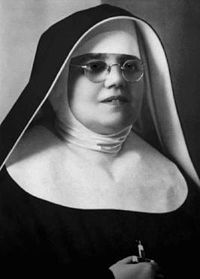
Image: Korcula 17 – Marija Petkovic
18) Flora
As one of the most forested islands in Croatia, Korcula has an abundance of vegetation. Much of the land is covered with woods and macchia (undergrowth) with pines, cypresses and oaks dotting the landscape alongside carob, bay and olive trees. Wild herbs such as rosemary, mint, sage and oregano heavenly scent the air and foragers delight with pickings of asparagus in spring and mushrooms in autumn. You won’t need to look far for the colourful array of fruit trees including lemons, oranges and pomegranates and if you don’t have a tree growing in your own garden, you can always rely on a neighbour to turn up with bagful of ripe fruit (although you can run out of ideas of what to do with it all!). Korcula is also the habitat of several varieties of orchids. In 2015 a new species was recorded along with the re-recording of several rare species traced in the previous century.
Photo: Korcula 18 – Flora of Korcula
19) 500 Year-old cypress tree
Taking pride of place in front of the parish church in the village of Cara is a giant of a cypress tree. Measuring 50m in height, some say it’s as old as 500 years, which would make it one of the oldest cypresses in Europe. In 1825 it was protected under Croatian law due to its height and estimated age.
Image: Korcula 19 – 500 year old Cypress tree
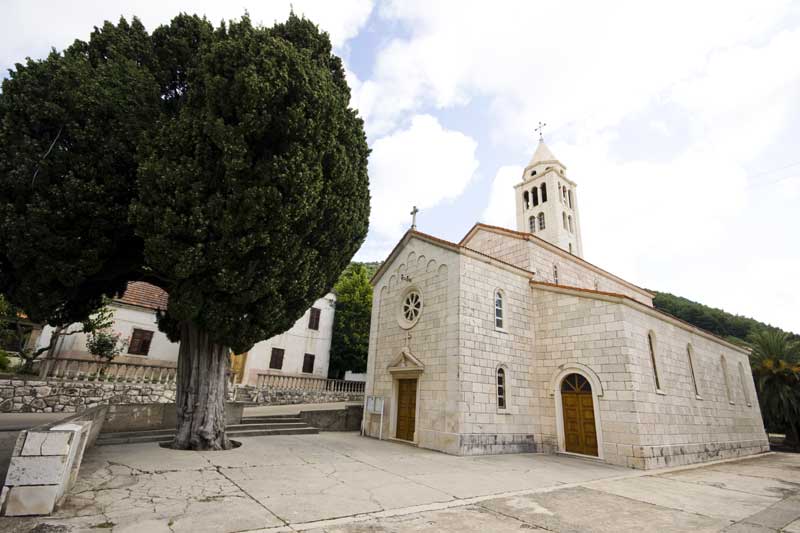
20) Caves of Korcula
Korcula has many caves. The composition of Korcula Island is nearly all rock and to be more specific: limestone, marl and dolomite. A landscape made up of these rocks is known as a karst landscape as water on its own or slightly acidic water erodes the stone through time (millions of years). This is what has happened to Korcula and why there are so many caves. There are dozens of cave sites on Korcula but the two most impressive and well known are Vela Spila (big cave) in Vela Luka and Samograd Spila in Racisce.
Vela Splia is the better known and easily accessible. The cave is one of the region’s most significant prehistoric archaeological sites. It was inhabited from 18000BC and the quality of the artefacts found there defines it as one of the earliest examples in Europe of contemporary civilisation.
Samograd Spila although far less known is said to be the most beautiful cave on the island. But due to its remote location it is a lot less explored.

Image: Korcula 20 – Vela Spila cave
Photo Credit: Romulic and Stojcic
21) Toreta and Vrtujak
Toretas are small round dry stone buildings only to be found on the island, all of which on the land of the aptly named “Toreta” winery in Smokvica. Korcula’s 15 stone buildings vrtujak are all found around the Vela Luka region. These are larger than Toreta and have a rectangular base as opposed to round. These buildings would have provided shelter and storage for people tending to their fields. Nowadays they are used for equipment for vineyard work and also collecting water.

Image: Korcula 21 – Toreta and Vrtujak
22) Herringbone structure of the Old Town
If you take a bird’s eye view of Korcula Old Town you will see that the alignment of the streets resemble the pattern of a herringbone or the bones of a fish. A central street runs through the centre and then leading off to the east and west are smaller streets. The streets to the east are curved to block the cold winds from blowing in and the streets to the west are straight, to allow the refreshing maestral breeze to create a natural air conditioning throughout the town. All the streets have stairs, except for one which is locally known as the “Street of Thinkers”.
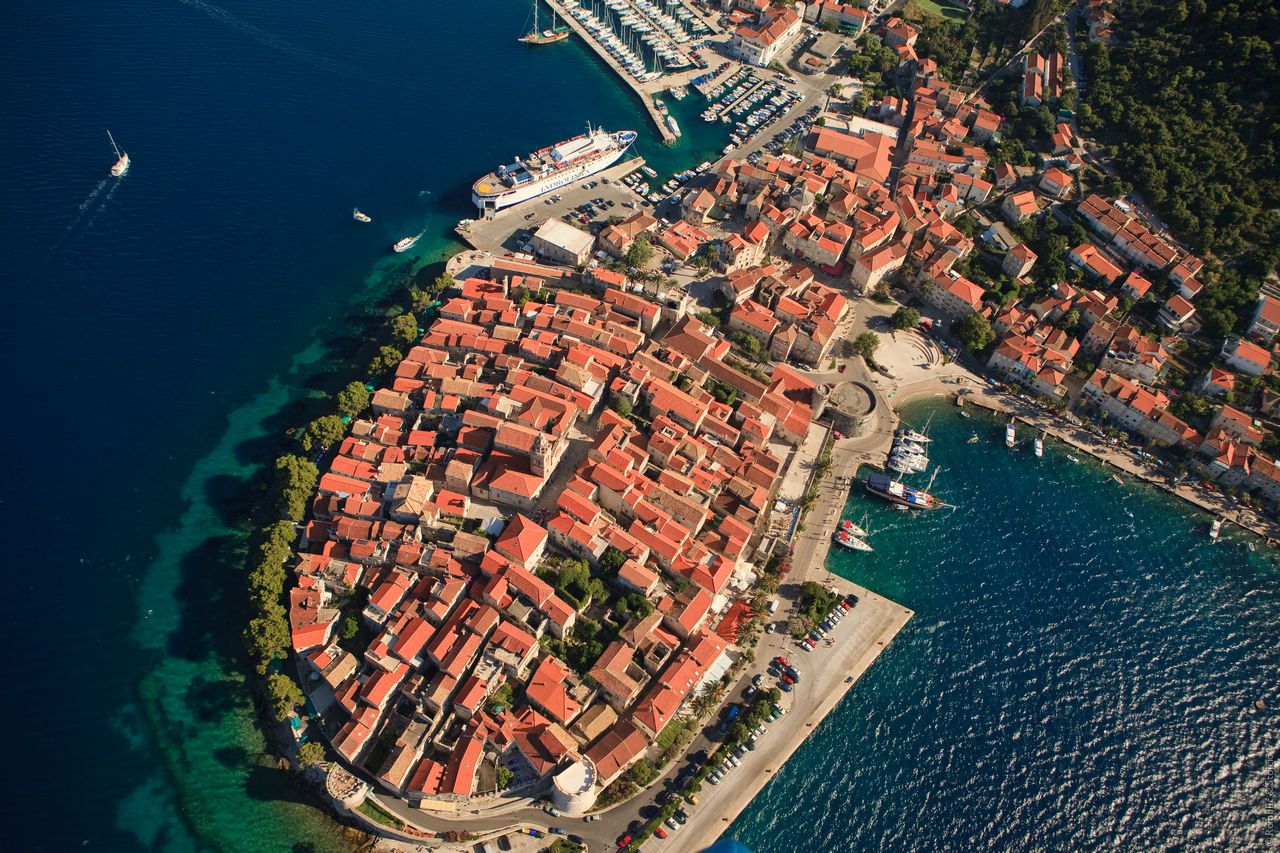
Image: Korcula 22 – Herringbone structure of Korcula Old Town
Image Credit: Romulic and Stojcic
23) Kocje and its magical fairies
A short walk from the hamlet of Brdo in Zrnovo village is a hidden natural gem called Kocje. Protected as a Nature Park of Croatia, it’s a fascinating walk through, over and around the magical rock formations blanketed with moss. In the area there are also two springs, the larger of the two called Fairy’s Spring (Vilin izvor). Legend has it that fairies inhabit the area and at times helped locals living close by.
Image: Korcula 23 – Kocje in Zrnovo
24) Blato and the rise and fall of the town’s population
Korcula Town has always been the most famous of the island’s towns and has always held the position of the administrative centre; but Blato has always been the bigger and richer of the two. Under Venetian rule, Blato was one of the only two places in Dalmatia that produced grain and was even capable of exporting to Italy and Sicily. It was also at this time the production of wine and olive oil grow rapidly. At one point Blato’s production was equal to half of the entire islands. This led to the increase in the town’s population. By 1770 the population was 1425, whereas in Korcula Town it was 1072. During the centuries leading to the 20th, Blato’s population continued to grow and peaked at 8000. However during the 1920s and 1930s, due to the wine disaster (the phylloxera plague) there was an exodus of people from Blato, as there was no longer the industry to support the local population. It was recorded that on one day in 1924, 1200 people left Blato, heading mainly to Australia and Brazil. The population today is just over 3000.
Image: Korcula 24 - Blato
25) Food
You can taste delicious food across Dalmatia, from fresh seafood and fish to slowly cooked meat and potatoes prepared under a metal bell known as peka. Specific to Korcula Island however there’s a few dishes you’ll want to try whilst here. Starting with sea urchins, those spiky creatures you see lurking on the seabed across Croatia and avoid stepping on. On Korcula you delicately pick them up, scoop out the roe with a chunk of bread and munch them down with a good slurp of white wine. This isn’t something you’ll find at a restaurant so if you want to try the unique flavour of sea urchin, ask a local to help locate the female urchins and crack them open. Next up is a large helping of Zrnovski Makaruni. This is a meal of traditional pasta originating from the village of Zrnovo served with a sauce, typically a rich beef one. To make them you first chop the dough into small pieces and then wrap them around a stick making a makarun. It’s not as easy as it sounds and takes a few years of practice to perfect the art of makaruni making. Every year in Zrnovo they hold a festival dedicated to the tasty pasta where you can watch the dough being shaped whilst big pots of sauce bubble away and of course, eat it once it’s cooked. Finally for something sweet be sure to sample a couple of the dry biscuit-cake delights such as cukarin with a hint of orange and lemon or the nutty klasun.
Keen to know more about this fabulous island? John and Rachel have a VERY informative website with lots of things to do on the island. Check out Korcula Explorer for more.
For a nice video overview of the island of Korcula experience, we finish with this official tourist board promotional video.
Want to learn more about destinations in Croatia? Check out the TCN series, 25 Things to Know about Croatia.

